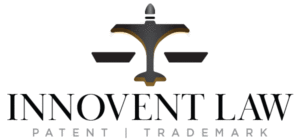As an aerospace patent attorney and aerospace engineer, I am always excited and intrigued when there is new case law in the aerospace patent field.
GE v. UTC: an aerospace patent case between two aerospace giants
The recent GE v. UTC (PTAB No. IPR2016-00531) case reveals the ramifications of the lack of proper legal standing regarding patent litigation cases. The court has ruled that GE failed to show “requisite proof of an injury in fact.” As a result, the Court of Appeals for the Federal Circuit will block GE’s attempt to invalidate one or more claims within one of UTC’s patents regarding a gas turbine engine.
Standing in aerospace patent law cases
In order for GE to properly challenge UTC’s claims through inter partes review (IPR), they must show standing, through the form of sufficient injury in fact. GE claimed competitive harm, economic losses, as well as estoppel to support their legal standing in the case. GE asserted that UTC’s patent impeded their ability to use one of their own patents from the 1970s as a basis for developing a new gas turbine engine, the issue exacerbated by the lengthy design, manufacturing, and testing of major aircraft components. GE further claimed that the constraints imposed by UTC’s patent restricted their design choices, in turn forcing additional research and development expenses. UTC responded by showing their lack of intent to sue or merely threaten to sue GE for infringement. Moreover, UTC underscored how GE failed to explicitly articulate how UTC’s patent actually resulted in increased expenditures. In short, GE’s attempts to show competitive harm, economic losses, and estoppel were deemed as unpersuasive.
UTC’s victory
Nonetheless, the appeals court qualified UTC’s clear victory in this case. One of the appellate judges noted that prior to the decision in ABX Corp. v. Presidio Components, Inc., “government actions altering the competitive landscape of a market cause competitors probably economic injury sufficient for Article III standing.” In this instance, the government’s decision to grant UTC monopoly rights regarding this technology (utility patent) could alter this highly competitive space. However, the judge is bound to interpret the facts based on precedent, notably ABX’s “patent-specific treatment of the competitor doctrine,” wherein government intervention at issue in IPR constitutes different intervention in other cases involving competitor standing.
In total, GE’s attempts to invalidate all or some of UTC’s patent were wholly unsuccessful. The court refused to consider the idiosyncrasies relating to developing IP in a field associated with considerable capital costs and decade-long timelines. GE’s inability to accurately highlight exactly how UTC’s patent led to increased R&D costs, thereby preventing them from obtaining competitor standing.
Interested in learning more about how to secure your intellectual property?
Schedule a free discovery call with our team today.
Innovent Law helps innovators protect, maintain and defend patent, trademark, copyright, and other intellectual property rights in the United States and around the world.
